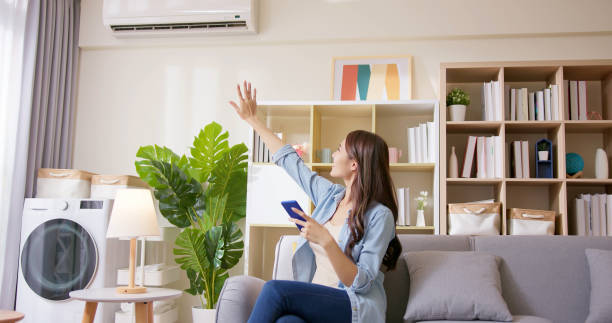- 1-905-452-8193
- Contact Us
- Member Login
- Get Listed Today
- 220,911 members

An HVAC system is a "heating, ventilation, and air conditioning" system that provides comfort in the form of temperature control and indoor air quality. These air conditioning Sydney systems are used in both residential and commercial buildings to ensure occupants are comfortable and safe from extreme temperatures or pollutants.
The main components of an HVAC system include a furnace, a heat pump, central air conditioners, ductwork, thermostats and other accessories. The furnace heats the coolant in the system through combustion or electricity while the heat pump moves heated or cooled air throughout the building's interior spaces. Central air conditioners act as refrigeration units to remove warm air from indoors while ductwork distributes this cooled or heated airflow throughout the premises. Thermostats control the temperature of the air by instructing the system when to turn it on or off.
Having allergies can be a difficult challenge to cope with day-to-day, and the last thing you want is for your HVAC system to make it worse. Fortunately, there are several steps you can take to minimize allergy symptoms in your home.
Here are some helpful ways to manage allergies through your HVAC system.
Upgrade or Replace Air Filters
The most important step you should take when managing allergies through your HVAC system is making sure your air filters are up-to-date and clean. Check on them regularly and replace them as needed; this will ensure that debris and allergens don’t float around the house.
Utilize High-Efficiency Particulate Air (HEPA) Filters
HEPA filters are specially designed to capture dust, pollen, and other allergens from the air. They are much more effective at trapping particles than standard filters, so if you suffer from chronic allergies, a good option may be to install one in your HVAC system.
Install An Air Purifier
Air purifiers use special technologies to effectively remove allergens from the air. Installing an air purifier in addition to your HEPA filter can help ensure that your indoor air is cleaner and less irritating for allergy sufferers.
Use Humidifiers
Dry air can make symptoms worse for some people with allergies; by increasing moisture levels in the air, humidifiers can help ease these irritating symptoms.
Clean Air Ducts and Vents
Dust, pet dander, mould, and other allergens can build up in the air ducts over time. Have a professional clean your air ducts to make sure that they are free of allergen buildup.
Install UV Lights
Ultraviolet (UV) lights are designed to kill bacteria, viruses, and other microorganisms in your air. Installing them in your HVAC system will prevent the spread of airborne pathogens and reduce potential sources of allergies.
Check for Leaks
Small gaps or cracks around windows or doors can allow outdoor allergens like pollen into the home; inspect your home regularly for any signs of air leakage and seal them up if necessary.
Keep Your Home Clean
Vacuuming, dusting, and mopping regularly can help keep allergens at bay in your home; make sure to do a deep clean every few months to ensure that all the hidden nooks and crannies are free of dust and pet hair.
Ventilate Properly
Open windows or doors when appropriate to allow fresh air inside the house; this helps reduce indoor allergens while also allowing you to save energy on cooling costs.
Don’t Use Aerosols
Sprays like hairspray, cleaning products, perfumes, etc., can contain chemicals that irritate allergies; try to avoid using aerosols in your home, even if they are labelled as “allergy-friendly.”
Avoid Carpeting and Upholstery
Carpets, furniture upholstery, and other heavy fabrics can trap dust and allergens; look for hardwood or linoleum floors instead and opt for leather or vinyl furniture when possible.
Change Your HVAC System’s Settings
Lastly, make sure you set your system to the right settings: a low fan speed with the air filter on the cleanest setting will help reduce allergens while still providing efficient cooling throughout your home.
By following these tips, you can keep your HVAC system running efficiently and your home free of allergens. With the right maintenance, you can make sure that your indoor air quality is always top-notch, even when pollen counts are at their highest.
If you have any questions about managing allergies through your HVAC system, or if you need to schedule a service call, don’t hesitate to contact your nearest reputable technician.
